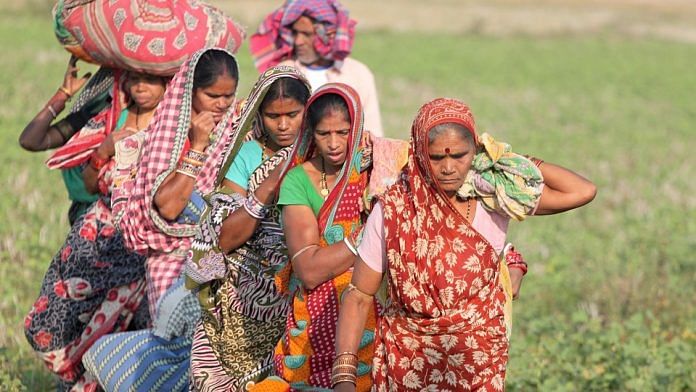For the court, how much is too much
Rishad A. Chowdhury | Advocate-on-Record at the Supreme Court and Partner, Verus
Hindustan Times
Rishad A. Chowdhury writes that during the Karnataka crisis, the role of several constitutional and administrative authorities have come under suspicion. Such authorities, he says, are accorded “close to absolute” deference, and thus, the question of how to respond arises when these authorities are seen as abdicating their responsibilities.
One approach, he writes, can be “a greater degree of judicial scrutiny, and higher frequency in intervention”. He is quick to point out though that the Supreme Court’s experience in the present case also highlights the limits of such intervention.
He adds that the courts should act cautiously “but should they not act at all?” He cites a recent US Supreme Court decision on gerrymandering in which the court said that adjudicating on this practice was beyond its reach.
He concludes by saying that the question of “How much is too much” in cases of SC intervention has no easy answers.
Tom & Jerry in West Asia
Ramin Jahanbegloo | Professor-vice dean, Jindal Global University
The Indian Express
Ramin Jahanbegloo compares the emerging situation between the US and Iran to a Tom and Jerry cat and mouse game. He mentions that even Iran’s Supreme Leader Ayatollah Ali Khamenei made such a comparison. Jahanbegloo, however, warns that unlike the cartoon where Jerry the mouse always gets the upper hand, the situation might be reversed for the Iranian mouse if the absence of diplomacy persists between the two countries.
He writes that Iran has been trying to showcase its military might in the region by actions like assisting the Houthi rebels to launch drone attacks on Saudi Arabian airports. At the same time, the Trump administration is still relying on economic sanctions.
Jahanbegloo suggests that Iran is unlikely to return to the negotiating table on its nuclear deal since they are backed by the Russians.
The digital identification parade
Aayush Rathi, Ambika Tandon | Researchers, Centre for Internet and Society
The Indian Express
The authors discuss the recent request of National Crime Records Bureau (NCRB) “for proposals for the procurement of an Automated Facial Recognition System (AFRS)” and its implications. They argue that “the AFRS may allow indiscriminate searching by tapping into publicly and privately installed CCTVs pan-India”. Similarly, they argue that the Facial Recognition Technology (FRT) is different from other forms of biometric identification like fingerprints as it enables a higher degree and pervasiveness of surveillance.
FRT also has the potential to infringe on people’s fundamental right to privacy, they add. They also highlight the technical problems inherent in the usage of FRT.
History and the 5G dilemma
Arun Mohan Sukumar | PhD candidate at The Fletcher School, Tufts University and currently with the Observer Research Foundation
The Hindu
Arun Mohan Sukumar writes that the dilemma India faces between acquiring 5G technology from China and salvaging its political relationship with the US is similar to the one faced by it in the 1980s with Rajiv Gandhi as prime minister.
At that time, he notes, the US was involved in a technological rivalry with Japan, and India became its “unfortunate casualty”. Rajiv Gandhi wanted a supercomputer for better prediction of India’s monsoons. The negotiations, however, were long and not much progress was made for an entire year. Eventually, India approached Japan for the deal.
On this, US started negotiations with Japan to build a “common understanding” for the sale of supercomputers. Japan, thereafter, became reluctant and India was forced to purchase an older generation supercomputer from the US with multiple riders.
Sukumar argues that India should not take sides in the US-China technology rivalry and take care that “history does not repeat itself”.
Indian regulators 2.0: Call for economic justice
Gopal Jain | Senior advocate, Supreme Court of India
The Financial Express
Gopal Jain argues that the sectoral regulators the Parliament set up need to be empowered. He writes that the time has now come to “set the stage for Indian Regulators 2.0” which can lead to better implementation of national objectives and improvements in the ease of doing business.
He makes some suggestions for it. He writes that the role of the regulator should not merely be seen as a tariff setter but as a solution provider for sectoral problems. He also suggests that the regulators need to have dialogue with multiple stakeholders and the relationship between the regulator and the regulated should be based on cooperation and not on a set of “dos and don’ts”.
The most important thing, however, Jain mentions is to ensure the “sanctity of contracts” and “prompt and timely payment”.
A National Vision Statement
Arvind Panagariya | Professor, Columbia University, USA
The Economic Times
Arvind Panagariya suggests that poor vision due to lack of access to eyeglasses is “the largest unaddressed disability in the world”. He writes that since eyeglasses cost as little as Rs 200, providing it to people will be a very important health intervention.
He mentions that impaired vision not only affects the quality of life but also leads to economic losses as the productivity of many workers drops. It also affects the learning outcomes of children as they are unable to see what is written on the board or in books.
He argues that while NGOs have been making important contributions, the scale of the problem requires central government intervention. And while the current financial situation of the country makes it infeasible, it must be high up on the government’s to-do list.
Panagariya concludes by saying that “a mission to bring eyeglasses to all” can also help India’s manufacturing and lead to more employment creation.



